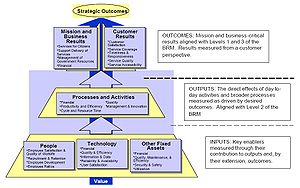CBS News
By Jill Schlesinger
December 31, 2012, 7:00 AM
(MoneyWatch) Next year is going to be a long one if you suffer from
triskaidekaphobia, fear of the number 13. To lessen the anxiety, consider these 13 money tips for 2013.
1. Track your expenses. …[Without] understanding where your money goes, it's nearly impossible to make different choices about how to spend. The good news is that there are plenty of software programs to help you out, or you can use a plain old spreadsheet.
2. Establish adequate emergency reserve funds. Perhaps the single best way to protect yourself from unforeseen circumstances is to hold 6 to 12 months of living expenses in cash or cash equivalent accounts. For those in retirement, consider carrying 12 to 24 months of expenses. Don't forget to replenish cash reserves for any bills that are coming up over the next year.
3. Earn more on your safe money. … Go to
www.depositaccounts.com, where you can find longer-term CDs with low penalties; shop around at credit unions that offer better interest than most banks; and consider "I-bonds," a kind of savings bond issued by the U.S. government, from treasurydirect.gov.
4. Get a handle on your risk tolerance. Before you make big changes to your investment accounts, take a risk assessment questionnaire, like this
one from Vanguard. The results should help you re-balance your portfolio in a manner that is consistent with your needs and takes into account your emotions.
5. Determine whether you should manage your money or hire someone to do it. Do you have the time, energy, acumen and temperament necessary to successfully manage all of the components of your financial life? If not, it could be time to interview a financial professional. The
National Association of Personal Financial Advisors is a good place to start the process.
6. Stop trying to beat the market. …
Charles D. Ellis, a consultant to large institutional investors, … conducted research that found that only one in five mutual fund managers beats the index over the long run. With those odds, investors would be wise to replace actively individual stocks and managed mutual funds with index or exchange-traded funds.
7. Calculate your retirement number. Many people say they are worried about retirement, but most of them haven't done any planning to help themselves. … The Employee Benefit Research Institute's
"Choose to Save Ballpark E$timate" tool is easy to use, or check out your retirement plan/401(k) website for more retirement tools.
 |
| Logo of the United States Thrift Savings Plan. (Photo credit: Wikipedia) |
8. Maximize retirement contributions. The federal government is helping on this front by increasing the 2013 limit for employees who participate in 401(k), 403(b), most 457 plans and the government's
Thrift Savings Plan to $17,500 from $17,000. The catch-up contribution limit for employees aged 50 and over remains unchanged, at $5,500. The limit on annual contributions to traditional and
Roth IRAs will rise by $500 to $5,500.
9. Consider buying a home. The real estate market is recovering, which means that those who have been sitting on the sidelines may want to take the plunge on a new home. Still, make sure you weigh whether you are better off renting or buying with this
NY Times calculator.
10. Refinance your mortgage. Mortgage rates are at historically low rates and appraisals are starting to rise, so even if you haven't been able to refinance in the past couple of years, try again. Use this
re-fi calculator to determine how much you may be able to save or how many years you could potentially shave off the term of your mortgage.
11. Assess your property insurance, … The best time to review your policy is before an event occurs, not after. The three biggest mistakes people make with homeowners insurance are: 1) under-insuring; 2) shopping by price only and not comparing apples to apples; and 3) not reading policy details before a loss occurs.
12. Review life, disability and long-term care insurance coverage. This is the part of your financial life where an error can cause huge damage to your family. For life insurance, make sure you have enough with this
online calculator. Nine times out of 10, term life insurance is the best bet. For disability insurance, enroll in your company's plan, if offered. If you are self-employed, shop around and buy at least some coverage. If you're over 50, time to shop around for long-term care insurance.
13. Create/review/update estate documents: Hire a lawyer to prepare a will, power of attorney and health care proxy/living will documents. … As part of the process, create a
go-to list of documents, which can include key information about investment accounts, insurance policies, auto titles, income tax returns. Estate records and final instructions also should be stored in a safe place -- don't forget to provide copies to your executor or trustee.
Jill Schlesinger
On Twitter »
- View all articles by Jill Schlesinger on CBS MoneyWatch »
Jill Schlesinger, CFP®, is the Editor-at-Large for CBS MoneyWatch. She covers the economy, markets, investing or anything else with a dollar sign. Prior to the launch of MoneyWatch in 2009, Jill was the chief investment officer for an independent investment advisory firm. In her infancy, she was an options trader on the Commodities Exchange of New York.
© 2012 CBS Interactive Inc.. All Rights Reserved.















 Al Lewis, widely credited with inventing the discipline of disease management (as currently defined), is president of the
Al Lewis, widely credited with inventing the discipline of disease management (as currently defined), is president of the  CFO.com
CFO.com







 Larry S. Chapman is president and CEO of Chapman Institute, which provides a certification program for worksite wellness practitioners.
Larry S. Chapman is president and CEO of Chapman Institute, which provides a certification program for worksite wellness practitioners. CFO.com
CFO.com














